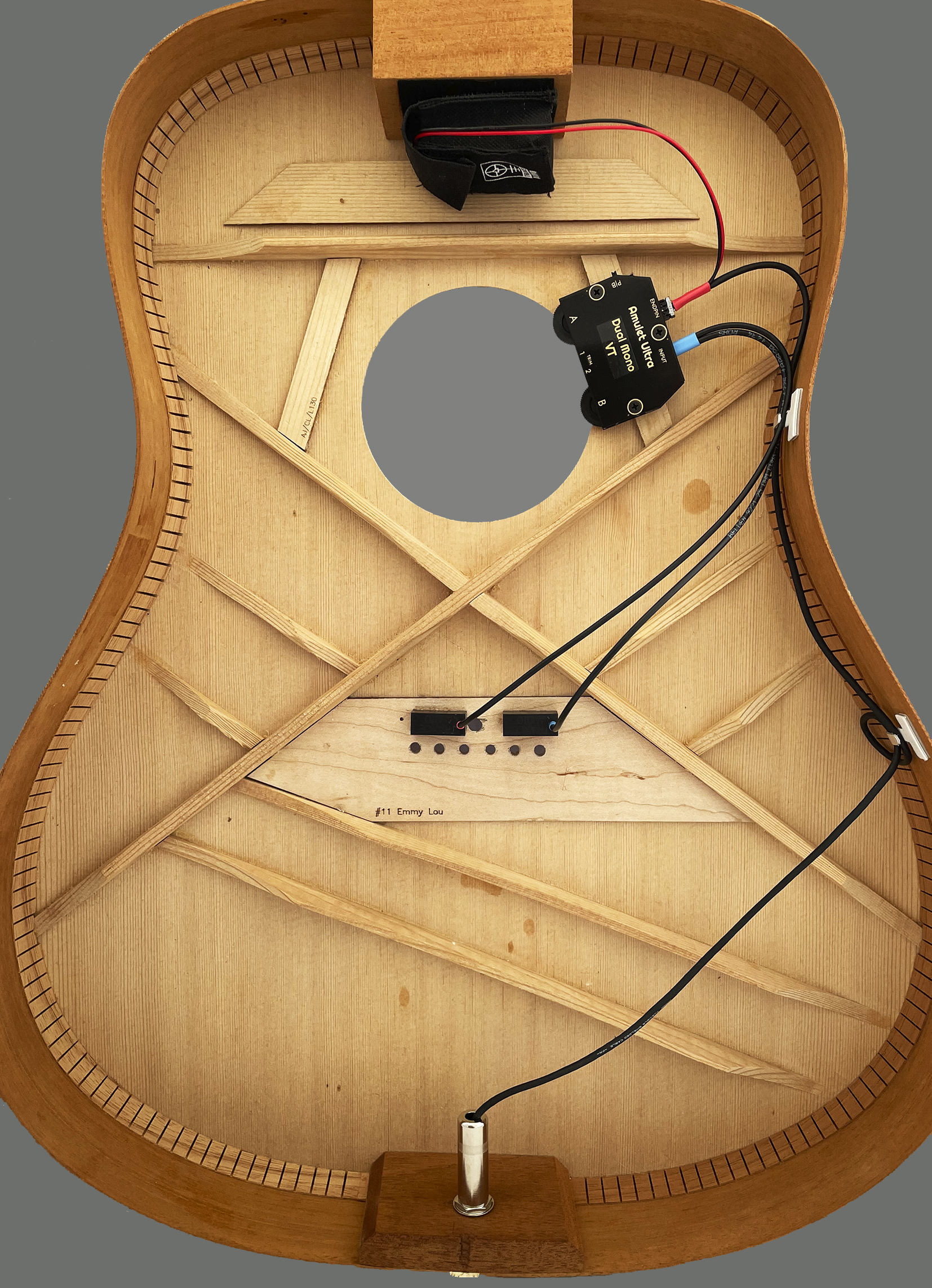With the amazing variety of acoustic steel string guitars available these days, there's no way for us to be familiar with the construction of all of them. We see a lot of guitars here, but we haven't seen everything, so it's a good idea to check things out yourself. Our pickups are installed inside the guitar on the bridgeplate at about the saddle line, and in general, most steel string guitars have standard bracing that will allow for placing the pickups in that location. There's a quick way to check to make sure your guitar's bridgeplate doesn't have any space conflicts - take a look! (thanks to our friends at Maury's Music)
Unfortunately, we probably can't help you. Most classical guitars are constructed with fan bracing, which blocks the area of the bridgeplate where the pickups need to be installed. We haven't seen a classical guitar that doesn't have this issue. If you find a classical guitar that has a different bracing style that will accommodate our pickups, we'd love to hear about it; please let us know!
Many vintage instruments are great candidates for our systems, but some vintage guitars were built with very small bridgeplates (some older Martin® guitars, for example), so it's especially important to check out the bridgeplate for space conflicts (see info on checking for space conflicts above). We also recommend checking your endblock depth (see below).
It's not an issue for most modern guitars, but it's a good idea to check your endblock depth especially if you have a vintage guitar. Please check out our detailed info on how to do that here.
NOTE: The Amulet Ultra systems utilize a standard 15/32" (1/2") endpin jack hole. Many guitars come already equipped with this standard size hole; if yours doesn't, contact a local luthier or experienced guitar repairperson to do the job!
Not at all! Our pickups will be happy with any wood you choose.
Carbon fiber is not a good candidate for our systems. The material responds very differently than wood, and our pickups are not designed to accommodate the differences.
Superglue on the bridgeplate often renders it unusable for our pickups for a number of reasons. Superglue soaks into the fibers of the bridgeplate wood, and unpredictably and permanently alters the characteristics of the way that it transmits vibration (which is what our pickups listen to to do their job). The same holds true for epoxy and plastic epoxy. It's very difficult to sand smooth this type of damaged bridgeplate to restore a surface that we can reliably bond to for our transducers, and the bridgeplate often has a varying vibration response because of the random way the superglue fills and changes the stiffness characteristics of the wood when it's applied for installation. This can change the frequency response or volume level (or both) of the pickup, making it difficult to get a good result. Sometimes this isn't a problem, but sometimes the only reliable fix is to have the bridgeplate removed, and replace it with a non-damaged one (not a trivial task).
The adhesives we provide to install our Acoustic Lens pickups will never soak into the wood or damage your guitar's bridgeplate!
Unfortunately, no. Kasha Bracing has elements that block the bridgeplate which makes installing our pickups impossible.
Unfortunately, no. The Bridge Doctor (frequently used in Breedlove® guitars) blocks the area where the pickups are installed. Adjustable bridges and floating bridges present a different problem; our pickups function by getting the vibration of the strings directly through the saddle. As these types of bridges are supported on either side by an adjusting screw, the vibration isn't transferred to the bridgeplate evenly, so our pickups can't capture a balanced sound from your strings.
Lowden guitars, because of various things about their construction, are usually not very good candidates for installation of our transducers. Because of the pinless bridge design, there is no easy way to implement the template install method we recommend. That means that you have to do any placement of the transducers via mirrors placed inside the instrument, which makes proper placement considerably more difficult. We've also found that the bracing tends to cross over the bridgeplate area too closely, blocking the ideal locations for the transducer placement. And the split saddle design can cause problems as well. We've seen instruments where the short saddle slot is cut at an angle, making the high E depth less than the B, and affecting the volume produced by each at our transducers. This has necessitated re-cutting the saddle slot so it is flat to the top to get a proper balance. We do not recommend installing on a Lowden.
